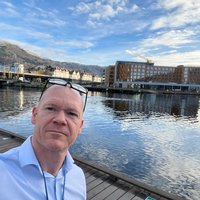Research facility (trapping systems) in the rivers Guddal and Etne

Upstream adult migration trap in the river Etne. The group runs trapping facilities providing unique research opportunities into wild population dynamics and the interactions between domesticated escapees and wild conspecifics. Photo: Øystein Paulsen
The river laboratory in the river Guddal is located in the central part of the Hardangerfjord, a fjord with high density of salmon farms. The facilities consist of a Wolf smolt trap which covers the full cross section of the river and captures the majority of salmon and brown trout migrating smolts. This trap has been monitored for a period of nearly 20 years and data is collected annually. There is also monitoring of water discharge and quality. Upstream traps located in the river capture all ascending fish. All up- and downstream migrating fish are sampled for DNA as well as phenotypic traits. The field laboratory has been used to address a wide variety of ecological, evolutionary and applied management questions, such as to investigate the effects of genetic introgression on fitness and smolt production in wild salmon populations 20,25,26, timing of migration and marine survival in anadromous brown trout 156,157, and the influence of sea lice on marine mortality of sea trout levels 126. It is one of only two locations in Norway with an opportunity to develop a time series based on complete river monitoring and absolute numbers of salmon and sea trout migrants.
The national field platform in the river Etne consists of a Resistance Board Weir trap which covers the full cross section of the river and captures upstream migrants of wild salmon and sea trout and effectively removes escaped farmed salmon from the spawning population (Skaala et al. 2015). The platform provides a time series on absolute numbers of wild salmonids and escaped farmed salmon, and excellent opportunities for comprehensive sampling for a number of studies including genetics of wild and introgessed salmon, fish health, marine survival of salmon and sea trout as well as angling mortality 33,34,129. There is a whole cascade of scientific papers coming out of the river Etne with 4–5 currently in press or under review.

Photo: Øystein Skaala
References: Key publications from the IMR Population Genetics group.pdf
Published: 01.03.2022


